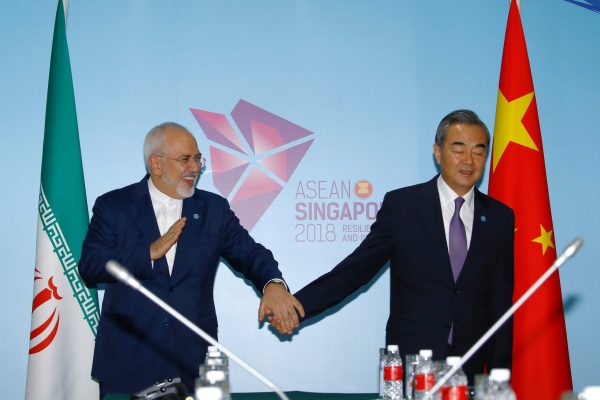It is the freefall of the rial which has been the most damaging. The national currency has lost half its value since the beginning of the year. This has seriously threatened what meagre savings people have and slashed purchasing power. Imported medicines have gone up in price by nearly a half and runs on drugs have made shortages in pharmacies a common complaint.
The cancellation of direct flights to Tehran from Air France, KLM Royal Dutch Airlines and British Airways have likewise added to a ‘suffocating’ atmosphere. And the country’s international pariah status has now been inflicted not only on the government but also onto its citizens, who had for the last three years or so relished their capacity to travel.
This is only the start of the trouble. Further sanctions targeting the oil industry are due in November 2018. While India has indicated it intends to continue purchasing Iranian oil, the US threat to bring Iranian oil exports to zero should be taken seriously, if only as a marker of the United States’ willingness to act punitively against the regime in Iran.
This leaves Iran in an increasingly desperate rush to convince the remaining signatories to the Joint Comprehensive Plan of Action (JCPOA), commonly known as the ‘Iran deal’, to retain their commitment and weather US secondary sanctions. The evidence from the private sector looks bad with a host of mainly European companies already pulling out. Thankfully for Iran, and despite US pressure, it appears unlikely that China will meaningfully change its trade relations with Iran — even after the reimposition of US sanctions.
Iran remains a pivotal component of the Belt and Road Initiative (BRI), and Beijing is unlikely to sacrifice potentially lucrative trade corridors running across the Iranian plateau in an effort to appease Washington. A connection to Iran across Central Asia also provides the possibility of continuing access to Iranian oil in the extremely unlikely event that the Strait of Hormuz were closed by the United States. Continuing to trade with Iran also provides China with an opportunity to flex its political and economic muscle.
Yet there remain significant obstacles to Iran’s closer engagement with China. Tehran must be hesitant when dealing with Beijing given its track record as an emerging neo-imperial power that has been more than willing to turn development projects and economic weakness into opportunities for the expansion of Chinese sovereignty overseas — from Sri Lanka to Djibouti.
In a country where national sovereignty remains not so much an ideal as an imperative, even the smallest of concessions can have outsized ramifications. Of concern for Tehran will be the Chinese intent to build a military base in Afghanistan, which Iran considers to be within its sphere of influence despite the presence of international troops in the country. Whether China will take advantage of Iran’s weak bargaining position remains to be seen, but the lessons learnt from Beijing’s expansion overseas through the BRI will certainly make Tehran pause for thought.
In addition, if Tehran is to reach out to China more substantively, it has a long way to go in convincing its population that Chinese products are just as ‘good’ as their European and US counterparts. Chinese economic power in Iran is felt largely through infrastructure investment. Chinese engineering know-how has built, and continues to build, public transport systems, rail networks and industrial infrastructure across the country. Convincing Iranians that such aptitude can be transferred to the realm of consumer goods remains an uphill battle.
Despite the country’s isolation and economic situation, Iran is very much a consumer society where brands matter. Chinese consumer items, such as Huawei or Xiaomi mobile phones, have persistently failed to capture the imagination of Iranians in the way that companies such as Apple have managed to. If sanctions are to tighten and the rial continues to collapse, efforts will have to be made to either lower consumer expectations or to assure the country that Chinese goods are of the same quality as European and US ones.
All of this remains contingent on the collapse of the JCPOA. If Tehran can convince European governments to keep their countries’ companies doing business in Iran, the need to fall back on China will be greatly diminished. On the other hand, if the agreement collapses, we can be certain that Iran’s alliance with China will be pivotal in determining the future durability of the country’s economy and its political system.
Simon Theobald is a PhD Candidate at the School of Archaeology and Anthropology, The Australian National University.


If having one military base in Djibouti makes China a “neo-imperial power”, what is the US having almost 1000 military bases around the world? Dark Lord Sauron?
I can’t help but laugh at this kind of western logic every time.